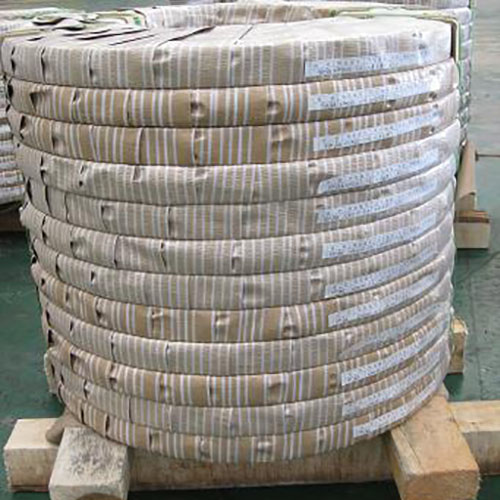

Measuring the thickness of 316L stainless steel coils is an important step to ensure their quality and compliance with standard specifications. The following are several commonly used thickness measurement methods:
1. Ultrasonic thickness gauge measurement
Principle: Ultrasonic thickness gauges use the propagation time of ultrasonic signals to measure the thickness of materials. Ultrasonic waves are transmitted to the material from one side, and are returned to the sensor through reflection. The thickness of the material is calculated based on the propagation time.
Applicability: Applicable to metals and other harder materials, especially for materials with high thickness measurement requirements such as stainless steel.
Operation steps:
Put the ultrasonic probe in contact with the metal surface and apply a certain amount of pressure.
Carefully adjust the equipment so that the ultrasonic waves can be accurately reflected back to the probe from one side.
The equipment automatically calculates the thickness and displays it on the meter.
2. Magnetic thickness gauge
Principle: Magnetic thickness gauges are usually used to measure the thickness of metals (such as steel) with ferromagnetic substrates. The instrument determines the thickness of the metal by measuring the change in the magnetic field.
Applicability: Mainly applicable to the measurement of ferromagnetic materials, it may not be applicable to non-magnetic metals, or a special version may be required.
Operation steps:
Place the probe on the surface of the stainless steel coil.
The instrument calculates the thickness value by the relationship between the generated magnetic field and the thickness of the measured material.
3. Mechanical micrometer
Principle: Mechanical micrometer measures the thickness of metal by physical contact, which is suitable for accurate measurement within a small range.
Applicability: Suitable for measuring the thickness of a small range, usually used in laboratories or quality inspections.
Operation steps:
Open the micrometer and adjust its measuring range.
Clamp the measuring head to the edge of the metal coil and gently rotate the handle until the micrometer is in close contact with the metal surface.
Read the scale on the micrometer to get the thickness value.
4. X-ray fluorescence analysis (XRF)
Principle: X-ray fluorescence analysis measures the thickness by emitting X-rays to the surface of stainless steel and then analyzing the fluorescence spectrum of the echo. Applicable to the measurement of coating or coating layer thickness.
Applicability: Mainly used for coating thickness measurement, suitable for the inspection of stainless steel surface coating.
Operation steps:
Aim the X-ray probe at the measurement surface.
Excite X-rays and collect the fluorescence signal of the echo, and the device automatically calculates the thickness.
5. Laser Thickness Measurement
Principle: Laser thickness measurement uses a laser beam to illuminate the surface of a stainless steel coil, and calculates the thickness by the time difference of the reflected light.
Applicability: It is suitable for high-precision and rapid measurement of the thickness of metal materials, especially suitable for production lines or automated testing.
Operation steps:
Aim the laser sensor at the surface of the object to be measured.
The laser sensor emits a laser beam and receives the reflected light, and the thickness value is obtained by calculating the propagation time difference of the beam.
6. Electronic Thickness Gauge
Principle: Electronic thickness gauges usually use capacitance, induction and other principles to measure the thickness of stainless steel coils.
Applicability: It is suitable for fast online measurement of thin-layer materials, especially metal sheets.
Operation steps:
Put the sensor of the electronic thickness gauge in contact with the surface of stainless steel.
The instrument automatically measures and displays the thickness value.
In summary, the selection of the appropriate measurement method depends on the measurement accuracy requirements, the measurement environment and the availability of equipment. For large-scale production and real-time detection commonly seen in industrial production, ultrasonic thickness gauges and electronic thickness gauges are the most commonly used choices. For small-scale measurements with high precision requirements, mechanical micrometers and laser thickness measurement are also good choices.
